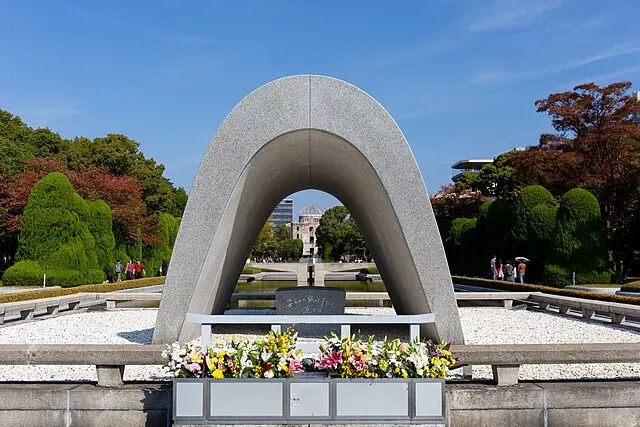Controversial adrenaline rush: Exploring Disaster Tourism
Times of Bennett | Updated: Oct 31, 2025 13:32

Correspondent: Vignesh Iyer
Tourism, a word commonly associated with the Eifel Tower, pyramids of Giza, Statue of Liberty, Leaning Tower of Pisa or the Taj Mahal. It conjures images of monuments, romance, history, and culture. In total contrast to this understanding, a growing segment of travelers now seeks adrenaline in places far removed from the ordinary; in a phenomenon known as 'disaster tourism .' This controversial trend, which involves visiting sites recently struck by natural or human-made catastrophes lies in the thin line between education and
exploitation, empathy and voyeurism.

What drives disaster tourism?
Often referred to as a branch of ‘dark tourism ’, disaster tourism takes visitors to locations affected by tragedy like tsunamis, nuclear accidents, earthquakes, oil spills, or hurricanes. Testimonials from disaster tourist hotspots such as Banda Aceh after the 2004 tsunami, Chernobyl , New Orleans post-Katrina, and volcanic sites like Mount Merapi reveal diverse motives. For instance, a traveller to Banda Aceh mentions, “The only tourist attraction is to stroll through the memories of this tragedy... boats brought inland by the wave, various memorials, and the museum telling the story of this catastrophe. Seeing the swarm of tourists snapping selfies made me wonder if this was a way to further understand what happened, or just a grim tourist activity”.
Many visitors express their desire for deeper learning by standing on the soil where catastrophe struck the hardest; be it Chernobyl, theHiroshima Peace Memorial , or the devastated neighbourhoods of New Orleans. It offers an immediacy and emotional resonance that no television reportage or history book can replicate. Some are motivated to bear witness, honour the victims and sometimes even support the recovery process through donations or volunteer work.

The psychology of disaster tourists
Recent studies suggest that disaster predictions can activate motives related to exploration, affiliation or empathy and care for affected communities. Disaster tourism may tap into a psychological desire to confront mortality in a controlled context or to experience the thrill of proximity to danger. There’s an ‘adrenaline rush’ at the edge of catastrophe, mixed with awe for community resilience and the transformative power of nature. However, not all motivations are altruistic. Some tourists seek the ‘unique’ experience simply for the
story. Social media craze has amplified this; with selfies at disaster sites sometimes sparking outrage due to perceived insensitivity.
Experiences and testimonials
Testimonials from disaster tourism sites are varied and complex. At Chernobyl, some visitors reported an ‘uneasy awe’ paired with a sense of personal transformation. A traveler to New Orleans afterKatrina recollected discomfort at touring neighbourhoods where residents still mourned lost homes leading to a mixed feeling of empathy and guilt. At sites like Pompeii or Hiroshima, the tourists appreciated the focus on education and memorialization. Their experience fostered deeper historical understanding and empathy for the affected. Still, some local perspectives are less enthusiastic. In New Orleans, a groups of tourists photographing devastated areas left many residents feeling exposed and objectified, fuelling debates about the intent of tourists.

Ethics and morality - A delicate balance
The ethics of disaster tourism are largely debated. Some argue it raises awareness, stimulates local economies, and ensures that lessons from tragedy are not forgotten. The tourist influx can support recovery, provided the funds remain within the affected community, and tour operators act responsibly. Yet, critics point out that disaster tourism can easily morph into exploitation or 'sadistic thrill'. Profit mongering at the expense of suffering, voyeuristic behaviour, and insensitive conduct can add on to the trauma of the already affected
communities. Moreover, in the immediate aftermath of a disaster, tourist influx may disrupt relief efforts and deplete the already scarce resources meant for survivors. Ethical disaster tourism is dependent on intention and conduct. Choosing tours led by locals, ensuring
economic contributions to recovery, waiting until the area is ready for visitors and prioritizing education are the ideal practices. Ultimately, as one reflective tourist put it, “It’s not just being present at the site, but what you do with these experiences that matters.”
Closing thoughts
Disaster tourism sits at crossroads of curiosity, compassion, and commercialism. It can be transformative and educational, or exploitative and disturbing, depending largely on the motivation and behaviour of the tourists and operators. As tourism becomes ever more accessible, the challenge of ensuring that visits to sites of tragedy honours memory, aids recovery, and nurtures empathy rather than commodifying catastrophe remains.
(This article is written by Vignesh Iyer, a Masters student of Mass Communication. He is passionate about journalism and aspires to become the editor of a leading news agency in India)
Tourism, a word commonly associated with the Eifel Tower, pyramids of Giza, Statue of Liberty, Leaning Tower of Pisa or the Taj Mahal. It conjures images of monuments, romance, history, and culture. In total contrast to this understanding, a growing segment of travelers now seeks adrenaline in places far removed from the ordinary; in a phenomenon known as '
exploitation, empathy and voyeurism.

What drives disaster tourism?
Often referred to as a branch of ‘
Many visitors express their desire for deeper learning by standing on the soil where catastrophe struck the hardest; be it Chernobyl, the

The psychology of disaster tourists
Recent studies suggest that disaster predictions can activate motives related to exploration, affiliation or empathy and care for affected communities. Disaster tourism may tap into a psychological desire to confront mortality in a controlled context or to experience the thrill of proximity to danger. There’s an ‘adrenaline rush’ at the edge of catastrophe, mixed with awe for community resilience and the transformative power of nature. However, not all motivations are altruistic. Some tourists seek the ‘unique’ experience simply for the
story. Social media craze has amplified this; with selfies at disaster sites sometimes sparking outrage due to perceived insensitivity.
Experiences and testimonials
Testimonials from disaster tourism sites are varied and complex. At Chernobyl, some visitors reported an ‘uneasy awe’ paired with a sense of personal transformation. A traveler to New Orleans after

Ethics and morality - A delicate balance
The ethics of disaster tourism are largely debated. Some argue it raises awareness, stimulates local economies, and ensures that lessons from tragedy are not forgotten. The tourist influx can support recovery, provided the funds remain within the affected community, and tour operators act responsibly. Yet, critics point out that disaster tourism can easily morph into exploitation or 'sadistic thrill'. Profit mongering at the expense of suffering, voyeuristic behaviour, and insensitive conduct can add on to the trauma of the already affected
communities. Moreover, in the immediate aftermath of a disaster, tourist influx may disrupt relief efforts and deplete the already scarce resources meant for survivors. Ethical disaster tourism is dependent on intention and conduct. Choosing tours led by locals, ensuring
economic contributions to recovery, waiting until the area is ready for visitors and prioritizing education are the ideal practices. Ultimately, as one reflective tourist put it, “It’s not just being present at the site, but what you do with these experiences that matters.”
Closing thoughts
Disaster tourism sits at crossroads of curiosity, compassion, and commercialism. It can be transformative and educational, or exploitative and disturbing, depending largely on the motivation and behaviour of the tourists and operators. As tourism becomes ever more accessible, the challenge of ensuring that visits to sites of tragedy honours memory, aids recovery, and nurtures empathy rather than commodifying catastrophe remains.
(This article is written by Vignesh Iyer, a Masters student of Mass Communication. He is passionate about journalism and aspires to become the editor of a leading news agency in India)











